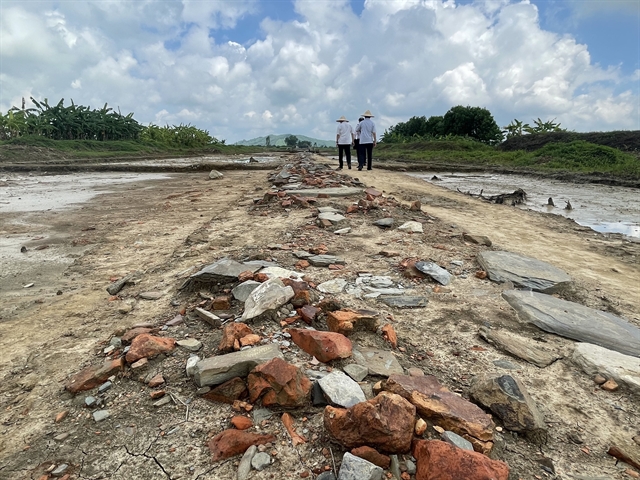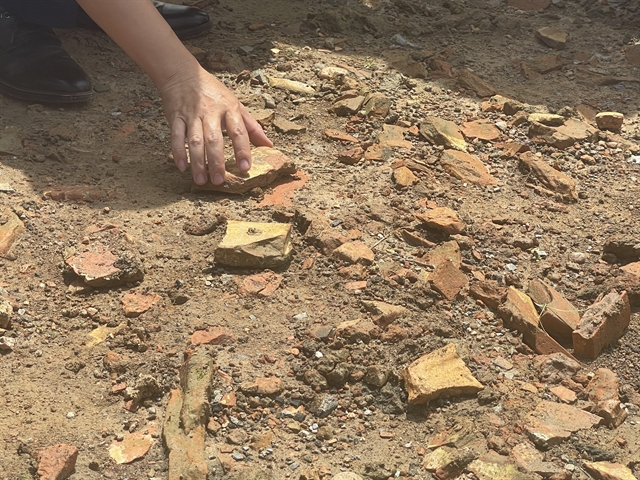
Part of the royal path unearthed in the Hồ Citadel is paved with slate. VNA/VNS Photo Hoa Mai
THANH HÓA — A citadel from the Hồ Dynasty, located in Vĩnh Lộc District of Thanh Hóa Province, was listed as a World Cultural Heritage site by UNESCO in 2011 due to its huge stone walls, which are a unique architectural construction in Việt Nam and neighbouring countries.
More recent digs at the excavation site have revealed traces of the King's Royal Path, or Ngự Đạo.
A workshop hosted by the Việt Nam Institute of Archeology, in collaboration with the Thanh Hóa Department of Culture and Sports and Tourism as well as the Hồ Dynasty Citadel Heritage Preservation Centre, has revealed the findings of the dig.
Archaeologists found evidence of a green stone embankment and slate paving in the middle of the southern gate, which they believe are remnants of the royal path.
Experts also clarified the stratigraphy of the path from the Hồ Dynasty to the present times, which consists of three major layers.
The uppermost layer is the current National Highway 217 which passes through the heart of the Hồ Dynasty Citadel.
The second (middle) layer was built by the French colonialists in 1937.
The third layer is a reinforced clay base from the Hồ Dynasty.
Along the royal path, archaeologists unearthed numerous significant architectural remnants and relics during excavations. Particularly, parts of the Dragon architectural cluster are deemed significant architecture and are regarded to be the key to locating the Hồ Citadel's main palace.

Archaeologists uncover tiles from the Trần-Hồ dynasties that were adorned with dragons and flowers. VNA/VNS Photo Hoa Mai
They also found many types of decorative bricks with patterns of chrysanthemums, lotuses and gerberas from the Lý-Trần dynasties, flower strings of the Lê Dynasty, and various types of square, rectangular, and decorative bricks printed with Chinese characters.
The excavation, according to Associate Professor Tống Trung Tín, Chairman of the Việt Nam Archaeological Association, has clarified the current status of the structure and construction materials of the royal path in the Hồ Citadel.
He stated: "The main purpose of the Hồ Citadel excavation is to investigate the royal path in order to fully understand the overall structure of the ancient capital. In this light, the excavation has made many new discoveries that contribute to our understanding of the construction and architecture of the Hồ Dynasty Citadel across time."
Some researchers suggest during the workshop that the structures identified on the royal path should be investigated more thoroughly in terms of location and function.
However, this is a challenging task when the remaining documents are nearly gone. To clarify, it is important to increase the entire research activity, archaeological digs, and comparative study of the ancient capitals of Việt Nam and numerous other countries. VNS
OVietnam